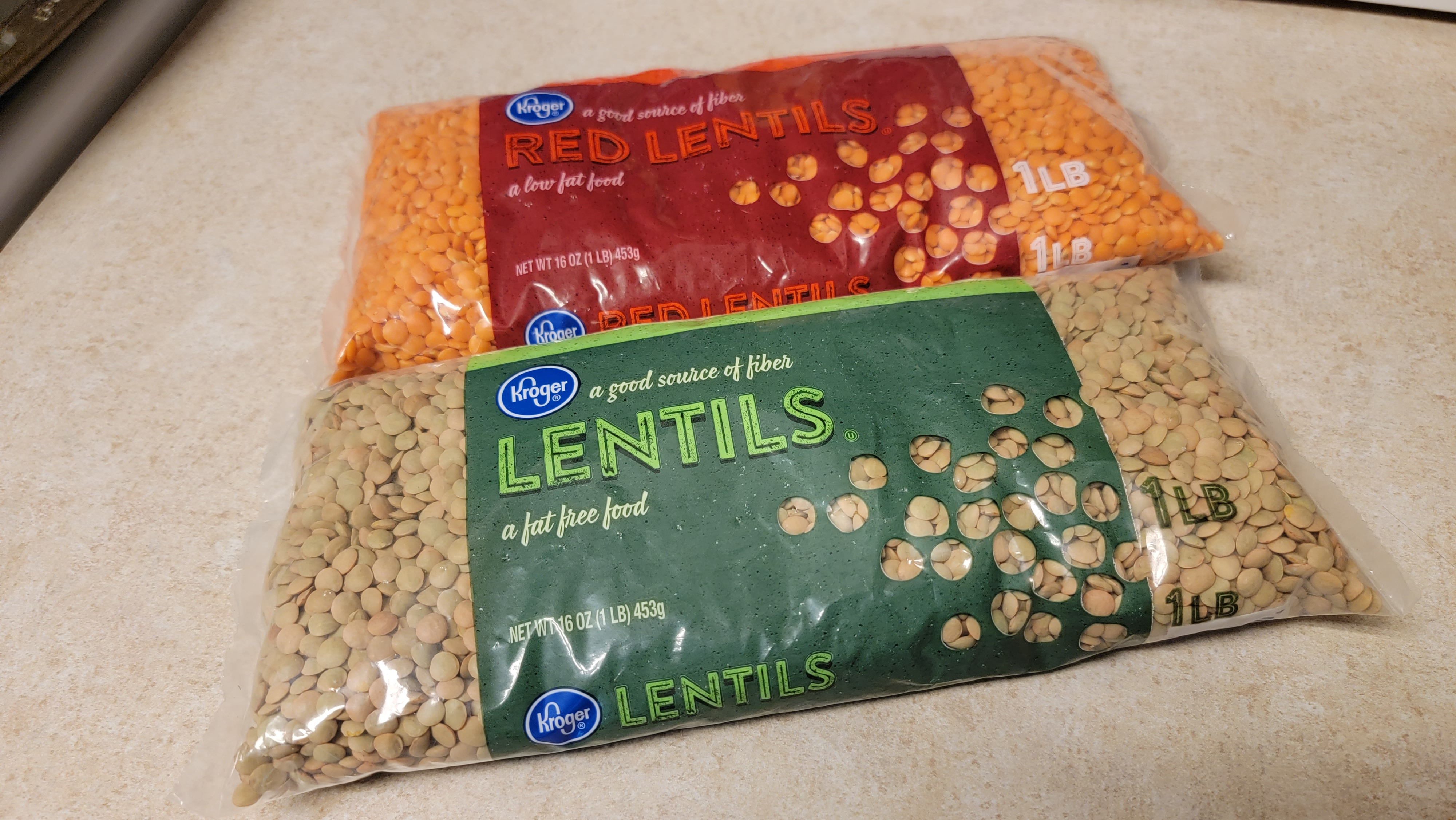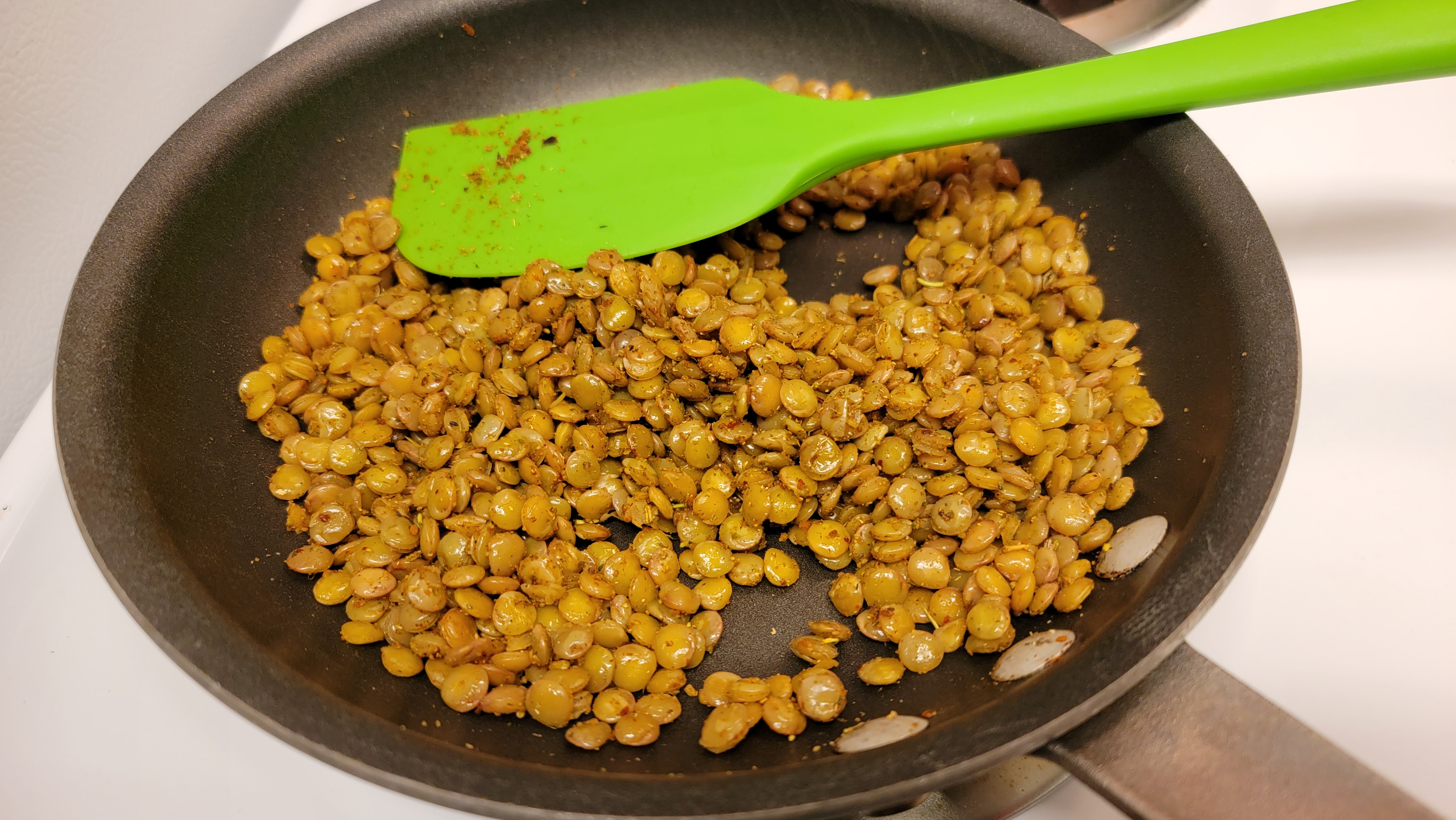The Easiest Ground Meat Replacement Isn't Beyond Or Impossible
Those plant-based substitutes are good, but this humble legume is great.
I love ground meat. Whether it's beef for tacos and burgers or pork with my noodles and pizza, there's something homey and comforting about a simple, highly seasoned protein. But when a pound of 80/20 now fetches more than $4, even raw hamburger has become something of a luxury item.
As such, I've spent the last few years sampling various alternatives. There have been some great advances in faux meat, many of which are sold in ground form. But nothing from the butcher or frozen section has matched the taste, versatility, and low cost of the humble lentil.
How to choose the right lentils for your cooking
Now, I'm aware that there are entire branches of soup and stew cookery based around lentils. As delicious as those are, they're not what I'm here to discuss. Nor will I be covering homemade veggie burgers, which can frankly be more trouble than they're worth. Instead, I'm singling out lentils, straight from the bag, as the best replacement for ground pork and beef.
But which type, exactly? Choosing your "starter lentil" is a bit like choosing a Pokémon, only more fibrous and less colorful. While both red and black lentils boast many delicious uses, I've found the basic green lentil to be the best replacement for meat. Below, I'll suggest a few ways to swap these into some favorite comfort foods.

How to use lentils in your cooking
Meat releases juice as it cooks. This wonderful substance helps make sauces, gravies, and other savory liquids that elevate your dish. Lentils don't do that. Instead, they absorb the moisture around them, so you'll need to come to the stove with some kind of stock or liquid at the ready.
Then there's the question of seasoning. On their own, lentils taste like what they are: toothy, slightly vegetal legumes. Depending on how they're cooked, the texture can range from soft and mouth-filling to al dente. But this innate and malleable blandness is one of the keys to their appeal. The nutrients are already there—all you have to do is spice the canvas.
Do you have a packet of taco seasoning you've been meaning to use up? Or what about one of those store-brand shakers of "Italian spices"? Try applying them here. And if you're one of those folks who grinds their own spices (and I'd recommend that you do), the brightness of toasted cumin or fennel seeds clings to lentils like they were made for it.

Lentil-ize your tacos, tostadas, and enchiladas
Beans are deliciously ubiquitous throughout Mexican cuisine. So why not add their humble cousin to the party? I'm not talking about mixing your lentils with the frijoles (although it makes for a wonderful chili). Instead, elevate the lentils to the main course.
Tacos are a natural entry point. The process is more or less the same as it would be for ground beef: sweat some diced onions, peppers, and garlic, and toss in a cup or so of rinsed green lentils. Add a generous mix of your preferred seasonings, let everything toast for a minute, and fill the pot with enough water or stock so that the lentils are submerged. A lot of moisture will be absorbed during the simmering process, so don't be shocked if you need to add a bit more. Taste for seasoning along the way, and cook until they've reached the desired doneness.
That's it! And while this makes delicious tacos with the addition of a little cheese, hot sauce, and sour cream, consider using them in some of your messier favorites, too. Enchiladas are a perfect vessel for this filling, and lentil-potato tostadas are a wonder of texture and flavor. Pile on some lettuce or cabbage, pico, and guac, and bask in the knowledge that you're at least trying to eat healthy.
Anger the masses as you stray further from the Meat Gods
I've already covered the use of lentils in tater tot casserole. And if that wasn't offensive enough, here's another blasphemy: They're a passable stand-in for ground Italian sausage.
This method is slightly different in that we cook the lentils on their own, gently simmering in lightly salted water. Drain them once they've reached a basic al dente, return them to a pan, and heat through with a bit of olive oil for a minute or so. Lastly, mix in a healthy measure of your favorite Italian seasonings. Don't forget the fennel, red pepper flakes, and sage, as these in particular are key.
From there, the field is wide open. I enjoy strewing these seasoned lentils across a pizza, or mixing them into some pasta with a butter, cream, or tomato sauce. If you're feeling particularly brave, you can attempt something that's sure to send purists into conniptions—Lentil-sagna. I've done this twice, using bechamel instead of ricotta. Is it as delicious as a genuine lasagna Bolognese? No, of course not. But with the proper addition and cooking of mushrooms (and perhaps a bit of white miso paste), the results are legitimately excellent.

Cheekiness aside, green lentils are genuinely the most nutritious and accessible alternative to ground meat I've encountered in my cooking. While plant-based meat substitutes from Impossible and Beyond might better simulate the taste and texture of animal products, they don't contain the comparable nutrients. And until their production can be scaled up to make them more affordable, you'll actually be paying more for the privilege of being nourished less.
So next time you're passing through the rice and dried beans at the grocery store, give a thought to the simple green lentil. You can probably get two bags for less than the price of ground chuck, and they'll stretch about four times as long.




